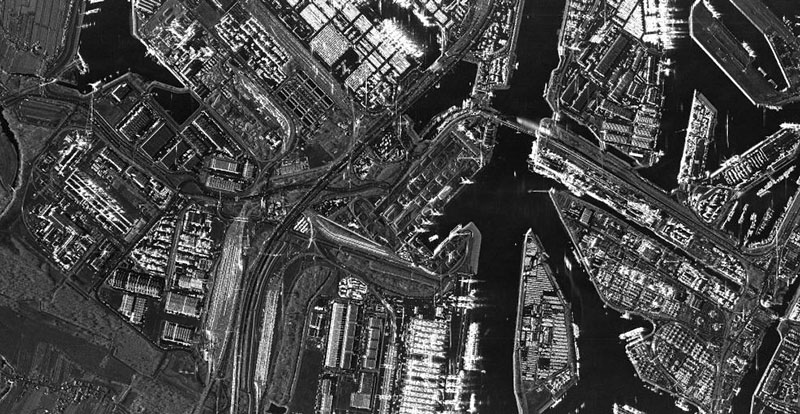Keyword
TerraSAR-X
7 record(s)
Provided by
Type of resources
Available actions
Topics
Keywords
Contact for the resource
Update frequencies
-

This collection contains TerraSAR-X Level 1b data acquired over the pre-defined Geohazard Supersites and a number of CEOS projects regions. The collection comprises mainly complex (SSC) with a number of detected (MGD) products. TerraSAR-X data can be ordered by a Principal Investigator (PI) of a respective Supersite region under the terms of a TerraSAR-X Science proposal accepted by DLR. Data is available for download by the Geohazard scientific community under the terms of the user license. Supersites are single sites or extended areas of high priority to the Geohazards community in which active single or multiple geological hazards pose a threat to human population and/or critical facilities. The Supersites initiative provides access to spaceborne and in-situ geophysical data of selected sites prone to earthquake, volcano or other hazards. For further information see: http://ceos.org/ourwork/workinggroups/disasters/gsnl/ Overview of permament Supersites: http://geo-gsnl.org/supersites/permanent-supersites/
-

This collection contains radar image products of the German national TerraSAR-X mission acquired in Spotlight mode. Spotlight imaging allows for a spatial resolution of up to 2 m at a scene size of 10 km (across swath) x 10 km (in orbit direction). TerraSAR-X is a sun-synchronous polar-orbiting, all-weather, day-and-night X-band radar earth observation mission realized in the frame of a public-private partnership between the German Aerospace Center (DLR) and Airbus Defence and Space. For more information concerning the TerraSAR-X mission, the reader is referred to: https://www.dlr.de/content/de/missionen/terrasar-x.html
-

This collection contains radar image products of the German national TerraSAR-X mission acquired in ScanSAR mode. ScanSAR imaging allows for a spatial resolution of up to 18.5 m at a scene size of 100 km (across swath) x 150-1650 km (in orbit direction) in regular ScanSAR mode (4 beams) and up to 270 km (across swath) x 200-1500 km (in orbit direction) in Wide ScanSAR mode (6 beams). TerraSAR-X is a sun-synchronous polar-orbiting, all-weather, day-and-night X-band radar earth observation mission realized in the frame of a public-private partnership between the German Aerospace Center (DLR) and Airbus Defence and Space. For more information concerning the TerraSAR-X mission, the reader is referred to: https://www.dlr.de/content/de/missionen/terrasar-x.html
-

This collection contains radar image products of the German national TerraSAR-X mission acquired in Staring Spotlight mode. Staring Spotlight imaging allows for a spatial resolution of up to 25 cm. The scene size varies depending on the incidence angle. As an example, 4 km (across swath) x 3.7 km (in orbit direction) can be achieved at 60°. TerraSAR-X is a sun-synchronous polar-orbiting, all-weather, day-and-night X-band radar earth observation mission realized in the frame of a public-private partnership between the German Aerospace Center (DLR) and Airbus Defence and Space. For more information concerning the TerraSAR-X mission, the reader is referred to: https://www.dlr.de/content/de/missionen/terrasar-x.html
-

This collection contains radar image products of the German national TerraSAR-X mission acquired in High Resolution Spotlight mode. High Resolution Spotlight imaging allows for a spatial resolution of up to 1 m at a scene size of 10 km (across swath) x 5 km (in orbit direction). TerraSAR-X is a sun-synchronous polar-orbiting, all-weather, day-and-night X-band radar earth observation mission realized in the frame of a public-private partnership between the German Aerospace Center (DLR) and Airbus Defence and Space. For more information concerning the TerraSAR-X mission, the reader is referred to: https://www.dlr.de/content/de/missionen/terrasar-x.html
-

This collection contains radar image products of the German national TerraSAR-X mission acquired in StripMap mode. StripMap imaging allows for a spatial resolution of up to 3 m at a scene size of 30 km (across swath) x 50-1650 km (in orbit direction). TerraSAR-X is a sun-synchronous polar-orbiting, all-weather, day-and-night X-band radar earth observation mission realized in the frame of a public-private partnership between the German Aerospace Center (DLR) and Airbus Defence and Space. For more information concerning the TerraSAR-X mission, the reader is referred to: https://www.dlr.de/content/de/missionen/terrasar-x.html
-

The Global Urban Footprint® (GUF®) dataset is based on the radar (SAR) satellite imagery of the German satellites TerraSAR-X and TanDEM-X. By creating the GUF database, scientists at the German Remote Sensing Data Center (DFD) of the German Aerospace Center (DLR) have succeeded in using a newly developed method to generate a global raster map of the world’s built-up pattern in a so far unprecedented spatial resolution of about 12m per raster cell. Using a fully automated processing system, a global coverage of more than 180,000 very high resolution SAR images (3m ground resolution) has been analyzed acquired between 2010 and 2013. Thereby, the backscatter amplitudes of the SAR data have been used in combination with derived textural information to delineate human settlements in a highly automated, complex decision-making process. The evaluation procedure based mainly on radar signals detects the characteristic vertical structures of human habitations – primarily built-up areas. In addition, auxiliary data such as digital elevation models have been included to improve the classification process. In total, over 20 million datasets were processed with a combined volume of about 320 terabytes. The final global maps show three coverage categories (e. g. in a B/W representation): Built-up areas (vertical structures only) in black, non-built-up surfaces in white, areas of no coverage by TSX/TDX satellites (NoData) as most parts of the oceans in grey. The final product has been optimized for fast online access through web services by merging the 5 x 5 degree GUF tiles into a single global mosaic. Furthermore reduced resolution overviews have been generated with an interpolation algorithm, that computes the average value of all contribution pixels. The global mosaic uses PackBits compression to reduce file size. (GUF® and Global Urban Footprint® are protected as trademarks.)
 www.geodatenkatalog.de (S3L)
www.geodatenkatalog.de (S3L)